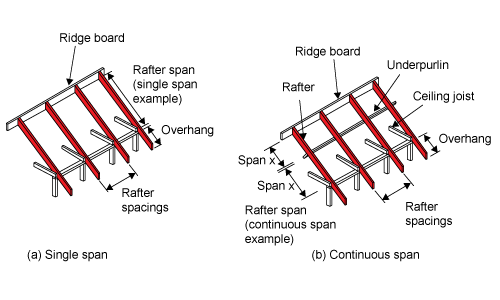Rafters

In a conventionally framed roof, the rafters are fixed on a slope and run in the same direction as the roof slope. Rafters are generally erected in opposing pairs or couples. They meet each other directly at their apex on the ridge of the roof. The rafters give the roof its required slope and provide the structure onto which the roof covering is fixed.
Where a rafter meets its supporting top plate it is cut so that it rests directly on the top plate. The cut is a 'birdsmouth' cut. Rafters may be birdsmouthed to a depth not exceeding one third of the rafter depth. Rafters must be single length members or joined over supports.
Table 29 of AS 1684.2 provides details for rafters and purlins.

